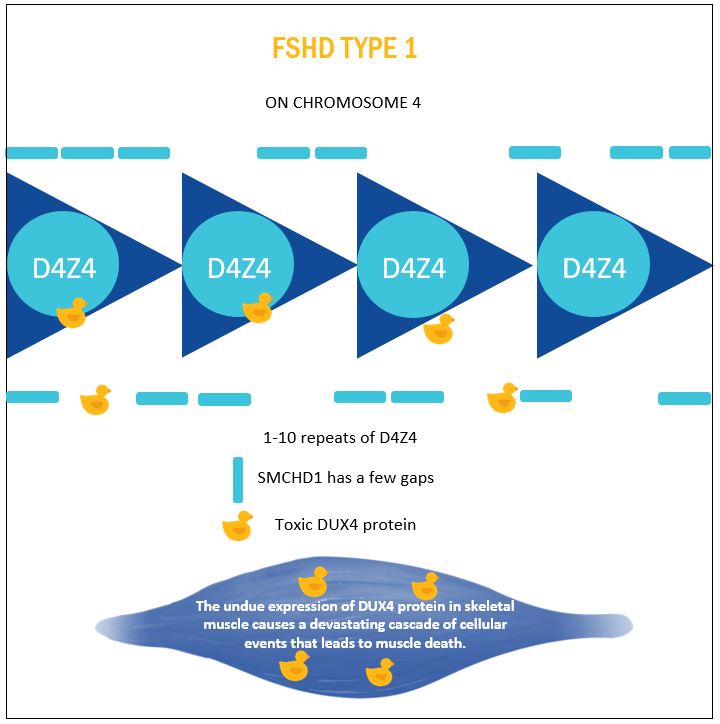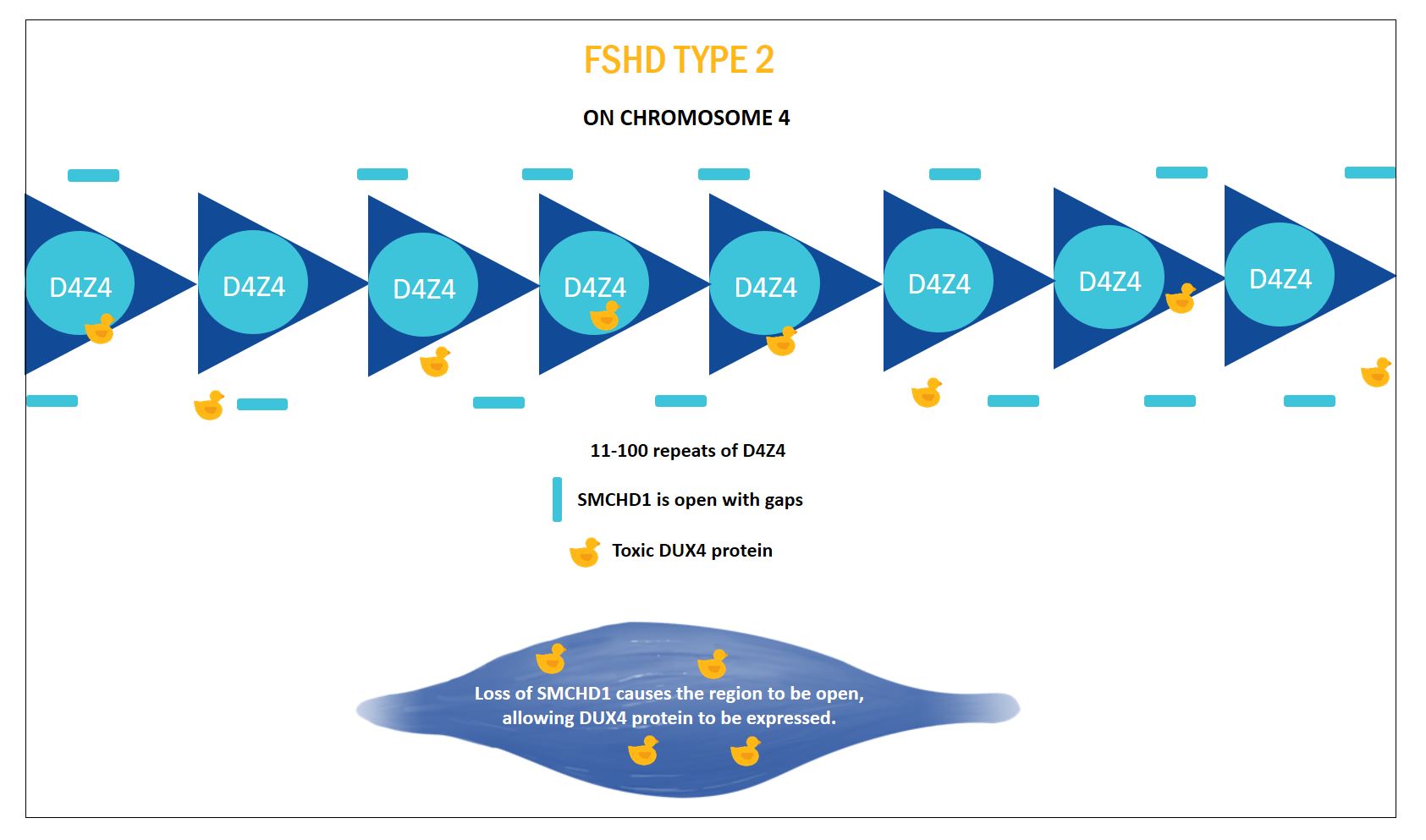WHAT IS FSHD?
FSHD is unlike most genetic conditions where a mutation causes pathological changes in a particular gene and protein. FSHD is caused by mutations that actually increase the expression of a toxic protein.


FSHD TYPE 2
FSHD type 2 was characterised when a large family was found with FSHD symptoms indistinguishable from FSHD1, but without the contraction of the D4Z4 domain on chromosome 4. People with FSHD2 (5% of cases) have more than 11 D4Z4 units like people without FSHD.
The defect in FSHD2 was found to be in a gene called Structural Maintenance of Chromosomes Hinge Domain Containing 1 (SMCHD1). This gene acts as a lock for regions on the genome, in people without FSHD this protein is keeping regions like the one that contains the DUX4 protein, closed. Mutations in SMCHD1 lead to a smaller amount of this protein being produced. Less protein means less repression on regions of the genome that are usually closed. This includes the D4Z4 region causing DUX4 to be expressed where it is able to cause the same types of damage to muscle cells observed in FSHD1.
FSHD Global will continue to update this page as discoveries are made. Research in this area is progressing very quickly. If you would like to be kept up to date on new research in FSHD please subscribe to our Monthly newsletter ‘Progress’. This newsletter contains summaries of recently published research and updates from FSHD Global funded research along with updates from the FSHD Global community.













